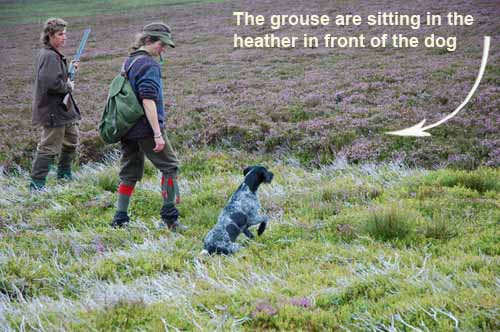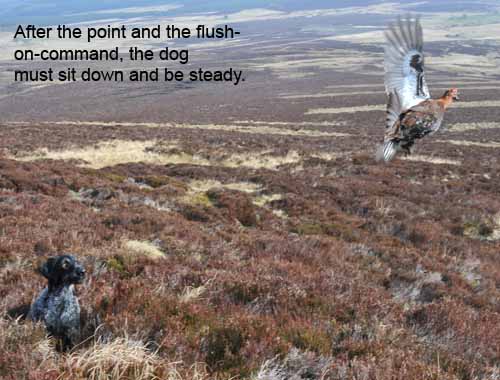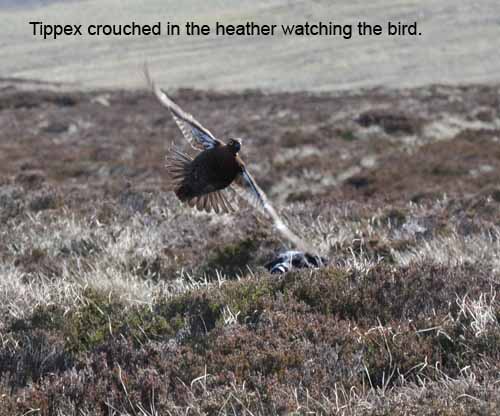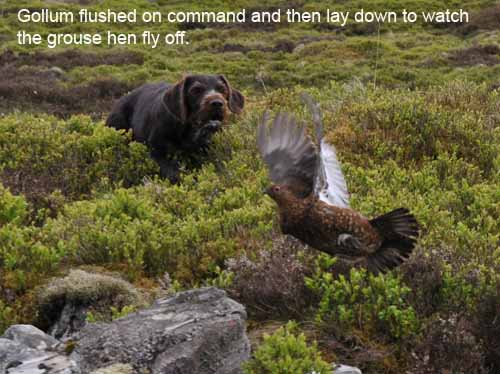Catching that moment
For ages I have been wanting to take that one, very specific photograph, where you see the bird, right as it flushes, and you see the pointing dog’s face at the same time. Usually, you try to work the pointer into the wind and when he comes on point, you are naturally positioned behind the dog with the birds in front like on this photo showing me with Tippex and Alex at the ready.

Whenever you work the pointers, you tend to get the best result when you work in to the wind so that the dog always has the wind in its nose, detecting any scent of birds. However, reality is that you usually go out with the dogs and do a walk which ends up where you started. This means that some of the hunting has to take place on a back-wind. On the back-wind hunting is a bit more difficult as the dog is supposed to take a big ‘bite’ of ground in front of you and then work that piece of ground back towards you, momentarily in to the wind. So as you walk with the wind behind you, you will find that the dog will go on point FACING you, into the wind. When you then walk up, you will usually go around the dog and stand behind it ready to give it your command to flush the bird. There are a couple of reasons for this and the first reason is safety when you are shooting. If everybody is positioned behind the dog, the dog is safer for the shots than if two guns are standing, facing the dog. Also, it can sometimes be difficult to get the dog to flush the birds from a distance (but good dogs will do that on command). It has to be said that we often just walk in and allow the guns to flush the birds because by the time they “kick” the birds up, they are usually so close to the dog that they have sufficient height above the dog to take a safe shot.
Anyway….. what I wanted to put across was that one rarely flushes birds facing the dog. However, for the sake of the photo I wanted to take, I have been out looking for grouse pairs during March and April on the Scottish moors and flushed them all, facing the dog. The results are as below, where both Tippex and Gollum provided me with good opportunities. Tippex is a more ‘presice’ pointer whereas Gollum is young and sometimes a little off the mark. However, I managed to get the better of the pictures with him. The pictures below can be seen better in the Tuffies Dog Bed gallery.



It is now time to leave the grouse alone for the breeding season, but when we go out, using the pointers for counting the broods in July and August, I will be back, dragging my camera around on the moor in pursuit of more shots. For now the fun with the pointers is mainly training for working tests. More about that soon.
-
02/04/2011 12:31
Counting Grouse Pairs on the Moor.
As I work my pointers on the grouse moors together with my fantastic friend, Anne Johnson, we are involved in the grouse counting from time to time. Early in the year, February-March-April, the grouse is pairing up ready.. -
11/05/2011 14:47
The two BORING months with HPRs.
For us with working pointers, May and June are boring!! They are the only two months where we must truly keep our dogs off the moor so we don't disturb the nesting birds. Already in July we can start looking at the brood..



